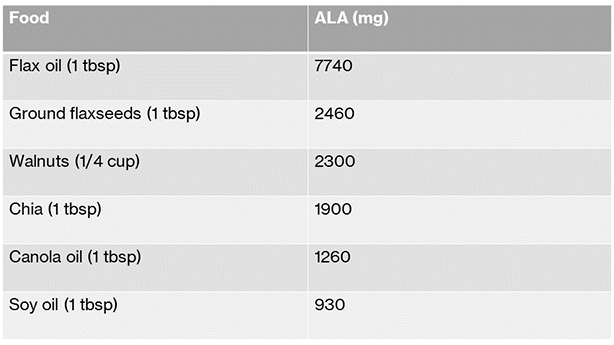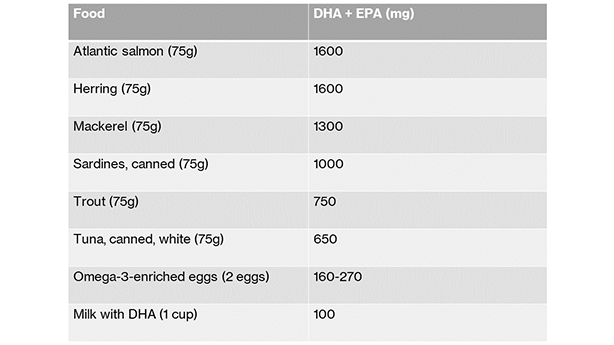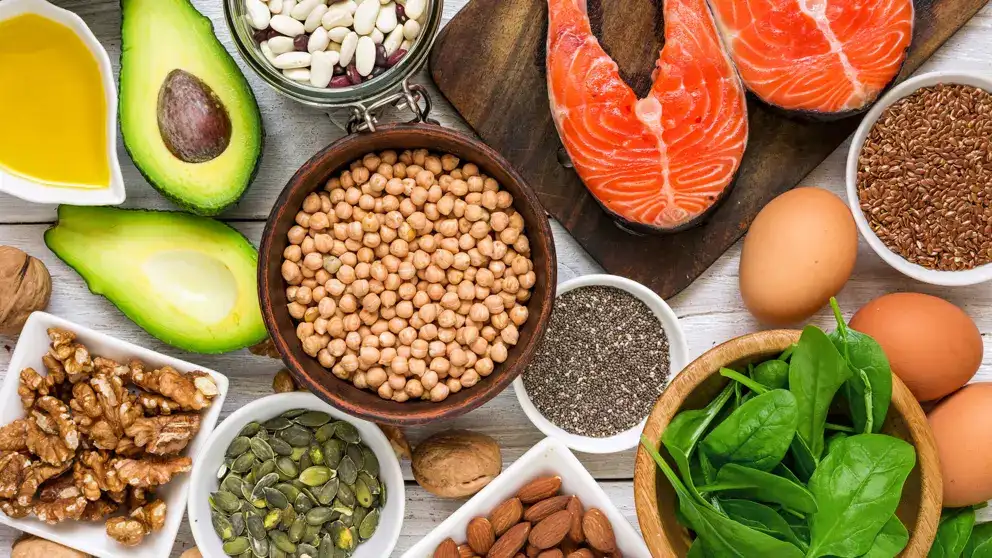If you’re interested in heart health, you’ve probably heard of omega-3 fats. These healthy fats may help protect against heart disease and there is research looking at their role in lowering risk for dementia and Alzheimer’s disease. Here’s a guide to help you choose the right omegas for your diet.
Omega-3s from plants
There are three main types of omega-3 fats found in foods: ALA, DHA and EPA. Our bodies cannot make ALA, an essential fat, which means we need to eat foods that contain it. The U.S. National Academy of Medicine recommends 1100 to 1600 mg/day of ALA. It comes from plant sources, specifically these:

In addition to potential heart health benefits from ALA, many of these food sources also contain dietary fibre (ground flaxseeds, walnuts, and chia).
Omega-3s from fish
DHA and EPA are found in fish and seafood. Studies have shown that DHA and EPA may be associated with decreased risk of cardiovascular disease. These fats may help lower blood pressure and triglyceride levels and prevent blood clots — all risk factors for developing heart disease. They may also play a role in reducing inflammation.
There is currently no dietary reference intake (DRI) for these, however the Academy of Medicine recommends 100-160 milligrams of EPA and DHA per day. The therapeutic dose for heart health is higher; check with your doctor to see what’s right for you.
Fish is the best source of DHA and EPA. All fish will be a good choice, but cold water fatty fish, such as salmon and tuna, will contain more omega-3s than options such as tilapia or bass. Omega-3-rich eggs and milk, which come from animals fed omega-3-enhanced feed, can add small amounts of DHA to the diet as well.

There is strong research showing that eating patterns that include fish and seafood are associated with reduced risk of cardiovascular disease, and moderate evidence indicates that these eating patterns are associated with reduced risk of obesity.
Get those omegas
Here are some tips to get more ALA in your diet:
- add ground flaxseed to oatmeal or yogurt
- add walnuts to your salad or muffins
- replace regular eggs with omega-3 enriched eggs
- use flaxseed oil or canola oil for salads or cooking.
For some delicious ways to get more fish in your diet, try these dietitian-approved recipes:
- Lemon, flax and parsley salmon
- Rainbow trout with ginger
- Cod fish with potatoes, fennel and carrots
- Salmon, bean and orzo salad
Find lots more heart-healthy fish and seafood recipes on our website.
The best way to get more omega-3s is in the foods you eat. If you don’t eat fish, you may choose fortified foods like eggs, milk or margarine.
Supplements may be an option if you don’t eat fish or fortified foods. Fish oil supplements may also be recommended by physicians as therapeutic treatment of heart disease when high doses (1000 mg/day or more) are required. To see if an omega-3 supplement is right for you and to ensure there are no implications with your medication or medical conditions, talk to your healthcare provider (physician, pharmacist, or dietitian).
Supplements with fish liver oil may have high amounts of vitamin A and D. If you are pregnant, do not take omega-3 supplements that have vitamin A.
- Learn more about healthy eating to reduce your risk.
- Browse our heart-healthy recipes.

